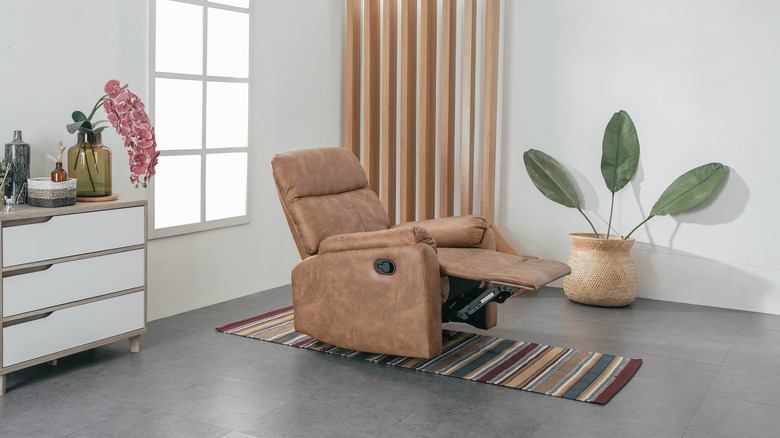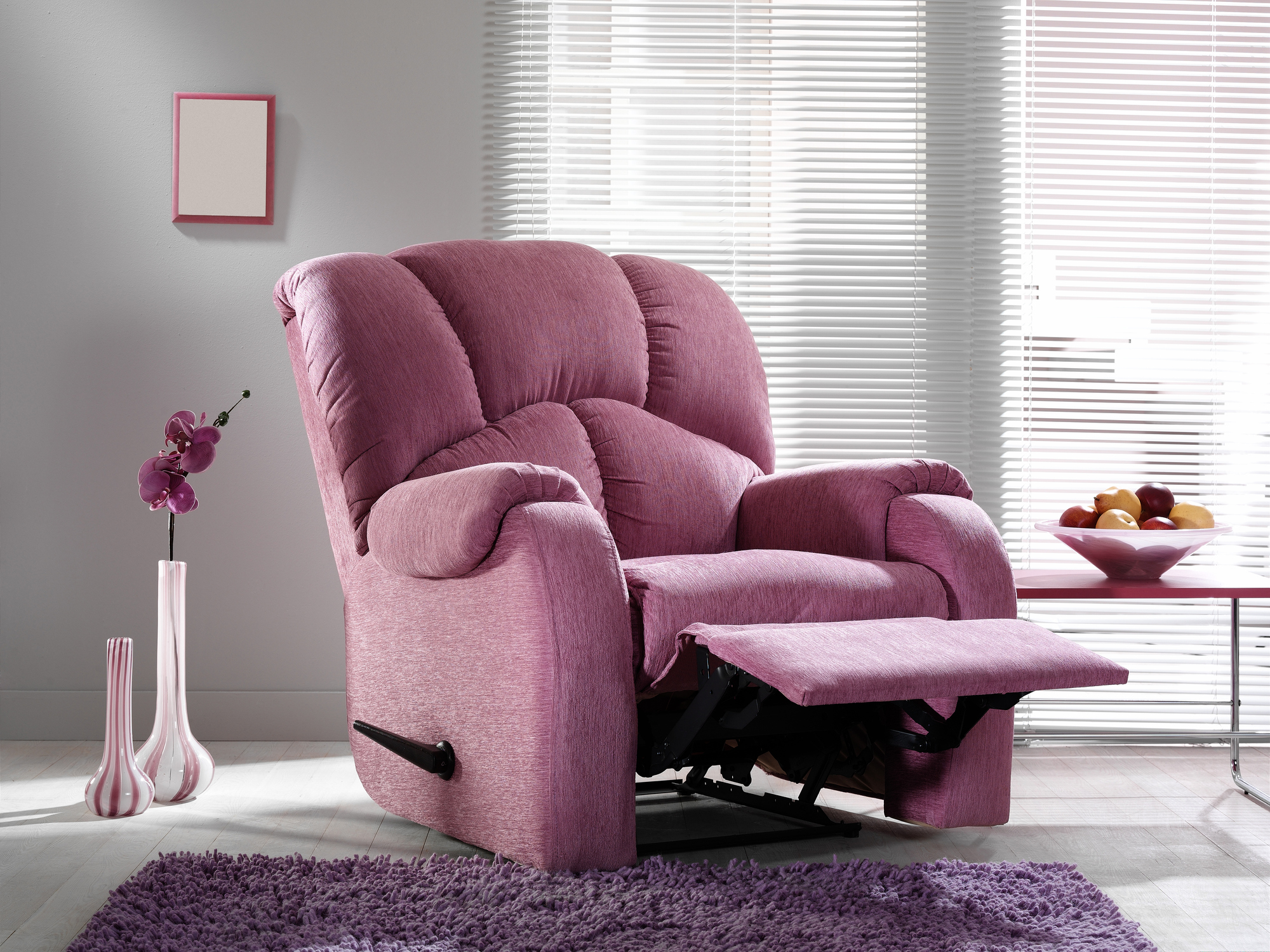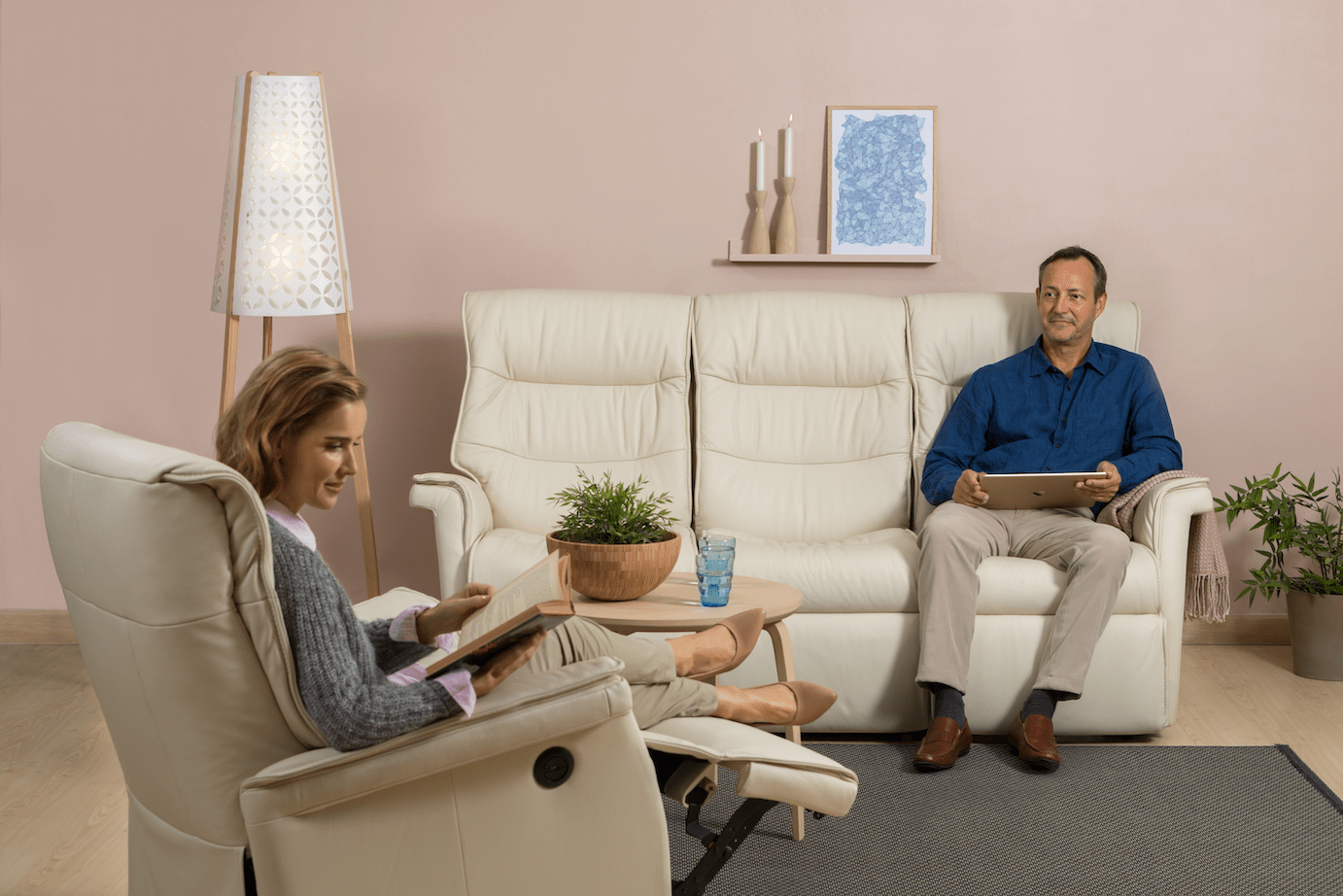When it comes to choosing the best seating option for your home, the debate between recliners and sofas is a classic one. Imagine sinking into a plush recliner after a long day, enveloped by its soothing embrace, or gathering with family and friends on a spacious sofa for a cozy evening. Each option offers unique benefits, tailored to different lifestyles and preferences. Understanding the nuances of each can help you make an informed decision that enhances your living space’s comfort and functionality. Let’s dive into the world of recliners and sofas to find out which suits you best.

Basics of Recliners & Sofas
Choosing between a recliner and a sofa requires an understanding of their fundamental differences. Both serve as pivotal pieces in any living space, but they cater to distinct needs and preferences.

Recliner Definition
Recliners are the epitome of personal comfort, designed for deep relaxation. They are chairs that allow the user to recline, extending a footrest and tilting the backrest to provide optimal comfort. The primary allure of recliners lies in their ability to adjust to various positions, offering a personalized seating experience. This flexibility is perfect for individuals who prioritize comfort and relaxation, making recliners a popular choice for those seeking an escape from everyday stress.
Sofa Definition
Sofas, on the other hand, are more about versatility and social interaction. Typically larger than recliners, sofas are designed to accommodate multiple people at once, making them ideal for gatherings and family time. They often act as the centerpiece of a living room, providing ample seating space while contributing to the room’s aesthetic. Sofas are available in various styles, from sectionals to loveseats, each offering different levels of comfort and design appeal.
Design & Functionality Differences
The design and functionality differences between recliners and sofas are significant. Recliners are engineered with intricate mechanisms that allow for smooth transitions from upright to reclined positions. Some recliners, like glider recliners, feature a gliding mechanism for additional comfort, while others, like wall hugger recliners, are designed to save space by reclining forward instead of backward.
In contrast, sofas prioritize seating capacity and style. They often come with fixed frames that do not change position, although some modern sofas incorporate reclining sections to blend the best of both worlds. Sofas are typically upholstered in a wide range of fabrics, from durable cotton blends to luxurious leather, affecting both their comfort and appearance.
Understanding these foundational elements can guide you in choosing the right seating option that aligns with your lifestyle and home decor preferences. Whether you seek the individualized comfort of a recliner or the social versatility of a sofa, both options offer unique benefits that can enhance your living space.
Recliner Appeal: Deep Relaxation & Personal Comfort
Recliners are celebrated for their ability to offer unparalleled relaxation and personal comfort. These seating options are more than just furniture; they are havens of tranquility designed to cater to the individual needs of their users. Let’s explore the different types of recliners and what makes them so appealing.

Recliner Types
Recliners come in various types, each designed with specific features to enhance comfort and functionality. Two popular types are glider recliners and wall hugger recliners.
Glider Recliners: Smooth Motion Relaxation
Glider recliners are synonymous with smooth and gentle motion. Unlike traditional rockers, which move in an arc, glider recliners move back and forth on a linear path, providing a soothing motion that many find incredibly relaxing. This gliding mechanism is perfect for unwinding after a long day, offering a serene experience that mimics the calming effect of a gentle swing. Whether you’re reading a book or watching TV, a glider recliner can enhance your relaxation time with its fluid motion.
Wall Hugger Recliners: Space-Saving Design
Wall hugger recliners are a brilliant solution for those with limited space. These recliners are designed to recline forward, requiring less clearance from the wall behind them. This space-saving design makes them ideal for small living rooms or apartments where every inch counts. Despite their compact nature, wall hugger recliners do not compromise on comfort or functionality, providing the same level of relaxation as their full-sized counterparts while fitting seamlessly into tighter spaces.
Recliner Construction Details
The appeal of recliners extends beyond their types to their intricate construction details. The core of a recliner’s design is its reclining mechanism, which varies from manual levers to advanced power controls. These mechanisms are built for durability and ease of use, allowing users to effortlessly find their desired seating position.
The construction of a recliner also involves consideration of the materials used. From plush padding that provides cushioning to high-quality upholstery fabric that enhances aesthetics and comfort, every component plays a crucial role. Fabrics can range from soft, breathable materials to luxurious leather, each offering different tactile experiences and durability levels.
Moreover, the frame of a recliner is typically made from sturdy materials like hardwood or metal to ensure longevity and support. This robust construction, combined with advanced technology and premium fabrics, results in a seating option that not only looks good but feels great and stands the test of time.
In summary, recliners are designed with the user’s comfort and relaxation as top priorities. Whether you prefer the soothing motion of a glider or the space efficiency of a wall hugger, there’s a recliner crafted to meet your needs, promising a personal oasis of relaxation in your home.
Sofa Advantages: Versatility & Social Seating
Sofas are the quintessential furniture piece in any living room, renowned for their versatility and ability to foster social interaction. They serve as a gathering spot for family and friends, providing ample seating and style to suit any home aesthetic.

Sofa Styles & Benefits
Sofas come in a myriad of styles, each catering to different tastes and functional needs. Here are some popular styles and their benefits:
-
Sectional Sofas: Ideal for large families or those who love entertaining, sectional sofas offer abundant seating space and can be configured in various ways to fit the room’s layout. They are perfect for open-plan living areas and can define spaces within a room.
-
Loveseats: Compact and cozy, loveseats are great for smaller living spaces or as an addition to a larger sofa. They provide intimate seating for two and can be paired with other furniture pieces to create a cohesive look.
-
Sleeper Sofas: For those who value multifunctionality, sleeper sofas provide a sleeping option for guests without the need for a separate guest room. This dual-purpose functionality makes them an excellent choice for apartments or homes with limited space.
-
Chesterfield Sofas: Known for their classic design, Chesterfield sofas feature deep button tufting and rolled arms, offering a touch of elegance and sophistication to any room. They are a timeless choice for those who appreciate traditional decor.
Each style of sofa provides unique benefits, making them versatile additions to any living space. Whether you prioritize seating capacity, style, or functionality, there’s a sofa designed to meet your specific needs.
Sofa Fabric Options & Comfort Impact
The fabric of a sofa significantly impacts both its comfort and aesthetic appeal. Different fabrics offer varying levels of durability, texture, and maintenance requirements. Here are some common sofa fabric options:
-
Cotton and Linen: These materials are breathable and comfortable, perfect for a casual and relaxed feel. They are available in a wide range of colors and patterns but may require more maintenance to prevent wrinkles and stains.
-
Leather: Leather sofas are durable and easy to clean, making them ideal for households with pets or children. They provide a sleek, sophisticated look and tend to improve with age as they develop a natural patina.
-
Microfiber: Known for its durability and stain resistance, microfiber is a practical choice for everyday use. It mimics the feel of suede and is available in various colors, making it versatile for different decor styles.
-
Velvet: Luxurious and plush, velvet adds a touch of glamour to any sofa. While it offers a soft and inviting texture, it may require more careful maintenance to preserve its appearance.
The choice of sofa fabric not only affects the comfort level but also the overall style and maintenance of the sofa. Selecting the right fabric can enhance the longevity and enjoyment of your sofa, ensuring it remains a central piece in your living space for years to come.
In essence, sofas are versatile seating options that cater to social interaction and style preferences. Whether you choose a sectional for its spaciousness or a loveseat for its coziness, the right sofa can transform your living area into a welcoming sanctuary for relaxation and gatherings.
Recliner vs Sofa Selection Factors
Deciding between a recliner and a sofa involves weighing various factors that align with your lifestyle, needs, and living space. Here, we delve into the key considerations to help guide your choice.

Space & Room Layout
One of the primary considerations when choosing between a recliner and a sofa is the available space and room layout. Recliners, especially wall hugger recliners, are ideal for smaller spaces as they require minimal clearance to recline. They can fit snugly in corners or smaller nooks, maximizing the use of space.
In contrast, sofas, particularly sectional ones, demand more room but offer the advantage of accommodating multiple people. They are perfect for larger living areas where space isn’t a constraint. When planning your layout, consider the flow of the room and how each piece of furniture will complement or obstruct movement. A well-placed recliner can create a cozy reading nook, while a strategically positioned sofa can anchor a large room and define social spaces.
Personal Relaxation vs Social Gatherings
Your choice between a recliner and a sofa also depends on whether you prioritize personal relaxation or social gatherings. Recliners cater to individual comfort, offering customizable positions for watching TV, reading, or napping. They are perfect for those who value personal downtime and seek a personal oasis for relaxation.
Sofas, however, are synonymous with social seating. They provide ample space for family and friends to gather, making them ideal for those who frequently host guests or enjoy communal activities. If your lifestyle involves regular entertaining or family gatherings, a sofa may better suit your needs, providing a central spot for social interaction.
Budget Factors
Budget is another crucial factor in the decision-making process. Recliners and sofas vary widely in price depending on their design, materials, and brand. Recliners can be a more cost-effective option for those seeking a single seat of comfort, particularly if space and budget are limited.
Sofas, while often a larger investment, offer more seating capacity and can be a more economical choice if you need to furnish a room for multiple people. Consider the long-term value and how the furniture piece will serve your household’s needs over time. Investing in quality materials and construction can ensure durability and longevity, providing better value for your money in the long run.
In summary, choosing between a recliner and a sofa involves assessing your space, lifestyle, and budget considerations. Whether you prioritize personal relaxation, social interaction, or a balance of both, understanding these factors can help you make an informed decision that enhances your living space’s comfort and functionality.
Recliner & Sofa Integration in Living Spaces
Integrating both a recliner and a sofa into your living space can offer the best of both worlds—personal comfort and ample seating for social gatherings. Achieving a harmonious balance between these two pieces requires thoughtful planning and design strategies.

Balanced Living Room Design
Creating a balanced living room design involves ensuring that both the recliner and the sofa complement each other and the overall aesthetic of the space. Here are some tips to achieve this balance:
-
Proportional Arrangement: Consider the size and scale of each piece. A large sectional sofa might overwhelm a small recliner, so choose pieces that are proportionate to each other and the room. This ensures that neither piece dominates the space and that they work together to create a cohesive look.
-
Color Coordination: Use color to tie the recliner and sofa together. This doesn’t mean they have to be the same color, but coordinating colors or complementary tones can create visual harmony. For instance, a neutral sofa paired with a recliner in a patterned fabric that picks up the sofa’s tones can be visually appealing.
-
Complementary Styles: While mixing styles can add interest, ensuring that the overall aesthetic aligns can prevent a disjointed look. If you have a modern leather sofa, a sleek recliner with clean lines would complement it better than a traditional, overstuffed recliner.
By focusing on these elements, you can create a living space that feels balanced and inviting, with both the recliner and sofa contributing to the room’s functionality and style.
Recliner & Sofa Combination Strategies
Strategically combining a recliner and a sofa can enhance the versatility of your living space. Here are some strategies to consider:
-
Zonal Arrangement: Use the recliner and sofa to create distinct zones within the room. The recliner can be placed near a window or bookshelf to create a reading nook, while the sofa can define the main seating area for socializing and entertainment.
-
Layered Lighting: Incorporate different lighting sources to highlight each area. A floor lamp beside the recliner can provide task lighting for reading, while overhead or table lighting can illuminate the sofa area for gatherings.
-
Functional Accents: Use side tables and ottomans to bridge the gap between the recliner and sofa. A shared coffee table can serve both the recliner and sofa, providing a central spot for drinks and decor. Alternatively, a small side table can be placed between the two to offer functionality and a visual connection.
-
Rug Placement: An area rug can anchor the seating arrangement and define the space. Ensure the rug is large enough to accommodate both the recliner and sofa, creating a unified look.
By employing these strategies, you can seamlessly integrate a recliner and sofa into your living space, maximizing comfort and usability. Whether you’re relaxing alone or entertaining guests, this combination can offer a flexible, stylish solution that adapts to your needs.
Conclusion: Optimal Comfort Choice
When it comes to selecting the optimal seating for your living space, the choice between a recliner and a sofa boils down to personal preferences, lifestyle needs, and the unique characteristics of your home. Both options offer distinct advantages that cater to different aspects of comfort and functionality.
Recliners are perfect for those who prioritize personal relaxation and seek a customizable seating experience. With options like glider recliners and wall hugger recliners, there’s a style to accommodate both space constraints and comfort preferences. Their intricate construction and variety of upholstery choices ensure that you can find a recliner that not only feels great but also fits seamlessly into your decor.
On the other hand, sofas are ideal for social gatherings and versatility. They offer ample seating for family and friends, making them the heart of any living room. With a range of styles and fabrics to choose from, sofas can be tailored to match your aesthetic while providing the practicality needed for shared spaces.

Ultimately, the choice between a recliner and a sofa—or a combination of both—depends on your individual needs. Assess the space you have, consider how you use your living area, and weigh the importance of personal relaxation versus social seating. By taking these factors into account, you can make an informed decision that enhances your living space, providing comfort and enjoyment for years to come. Whether sinking into a plush recliner for a quiet evening or hosting loved ones on a cozy sofa, the right choice will transform your home into a haven of relaxation and style.